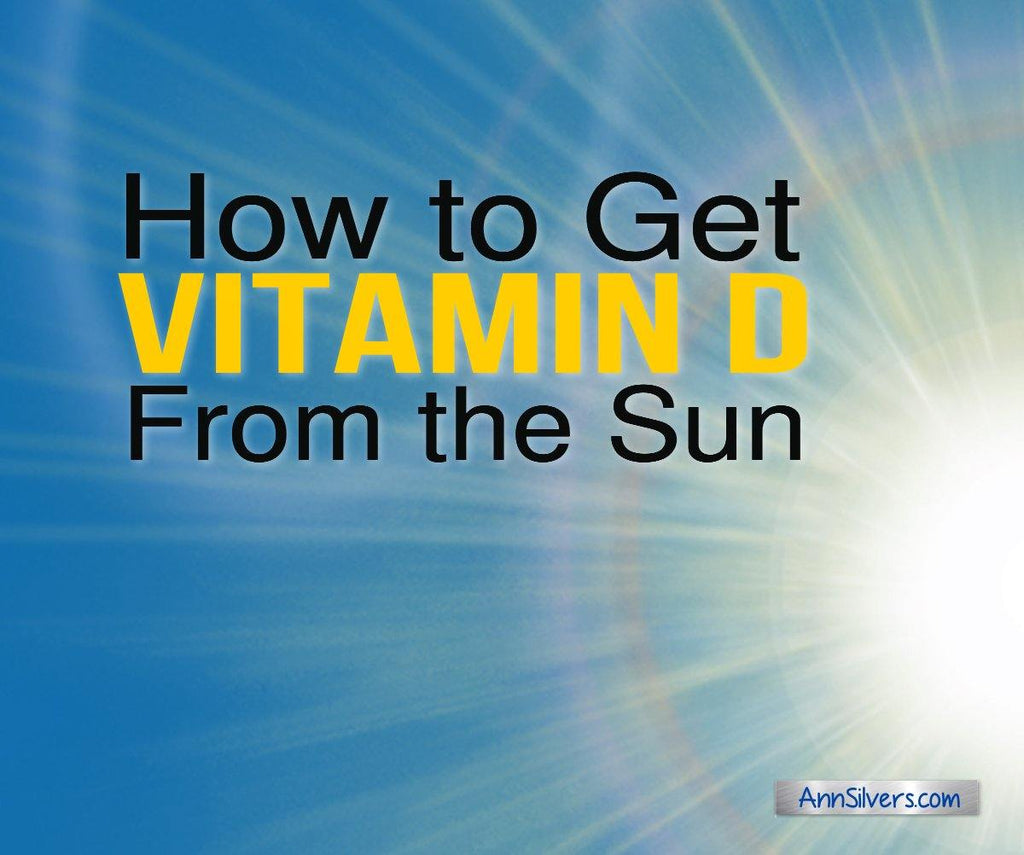Tips for How to Get Vitamin D from the Sun

Vitamin D is the sunshine vitamin, but how do you safely get vitamin D from the sun?
How much sun exposure do you need for healthy levels of vitamin D? Can I get vitamin D from the sun through my windows?
Read on for the answers to your questions and 10 tips to optimize your sun time for vitamin D production.
The Benefits of Vitamin D

Vitamin D helps your body, mind, and mood. If you don't have enough, your well-being suffers. Getting the Sunshine Vitamin into the healthy range can boost your wellness now and into the future.
Vitamin D benefits include:
- Reduced depression and anxiety
- Improved immunity
- Healthy bones
- Muscle strength and recovery
- Reduced diabetes risk
- Reduced cancer risk
I have had anxiety clients experience dramatic symptom relief when their vitamin D levels were improved from deficient to normal.
Vitamin D is one of the supplements I recommend in my Best Natural Supplements for Anxiety list.
The Stanford University Lifestyle Medicine website provides a good summary and source research for the physical benefits listed above.
Vitamin D Sources
The sun is the main natural source of vitamin D.
It is present in a few foods, but food sources get pretty complicated since there are 2 forms of the vitamin: D2 and D3.
Your body needs D3.
Your skin converts the sun’s rays into vitamin D3.
How to Get Vitamin D from the Sun
Vitamin D potential comes from the sun's ultraviolet B (UVB) rays combining with biochemicals in your skin.
“We each have vitamin D receptor cells that, through a chain of reactions starting with conversion of cholesterol in the skin, produce vitamin D3 when they’re exposed to ultraviolet B (UVB) from the sun.”
--David J. Leffell, MD, chief of Dermatologic Surgery Yale Medicine.
The key to getting enough vitamin D from the sun is getting long enough sun exposure to bare skin.
What Biochemical in Your Skin Turns into Vitamin D?

UVB light from the sun reacts with 7-dehydrocholesterol (7DHC) in the epidermis layer of your skin to produce cholecalciferol (vitamin D3).
Note that dehydrocholesterol has cholesterol in its name. Cholesterol isn't all bad. You need some for health, including for making vitamin D.
10 Tips for Getting Vitamin D from the Sun
If you want to support healthy vitamin D levels naturally, it’s not just about spending time in the sun—it’s about how you do it.
These 10 tips explain what really matters when it comes to making vitamin D from sunlight, so you can get the benefits while minimizing risks.
-
You have to be outdoors. The UVB rays don’t make it through glass.
-
The rays don’t pass through clothes either. Your skin has to be bare.
-
Sunscreen can get in the way too. You may want to allow some exposure before putting on the sunscreen. (I’m not saying dump sunscreen entirely.)
-
The square footage of skin exposed determines the amount of vitamin produced.
-
The UVB rays are strongest from around 10 am to 2 pm.
-
There is an optimal length of exposure for each person. That time is influenced by skin color. A fair-skinned person may only need 10 to 20 minutes. People with darker skin tones (because of a tan or genetics) require longer exposure times. After the optimum time is reached, your body stops producing the vitamin.
- As we age, our skin becomes less efficient at making vitamin D. By age 65, the skin's ability to produce vitamin D3 can be reduced to about 25% of that in younger individuals. This means older adults may need longer sun exposure to achieve the same vitamin D levels.
-
While your body will stop making vitamin D when it has enough, longer sun exposure could lead to sunburn, which has known risks for skin cancer. Some sun is good. Too much is not.
-
How many UVB rays make their way to your body is influenced by where you are on the planet relative to the equator, how cloudy it is, and the level of air pollution.
-
You can use the dminder app, created by an authority on vitamin D, Dr. Michael Holick, to help you track the potential for vitamin D exposure at different times of day wherever you are.
Does a Shower Stop Vitamin D Absorption?
Some sources have claimed that vitamin D needs time to enter your bloodstream after sun exposure, and that showering too soon, especially with soap, could wash it away.
But this idea has been debunked.
Vitamin D is produced inside your skin cells, not on the surface. That means it isn’t something you can wash off.
It's OK to take a shower after skin exposure, even with soap. Your vitamin D is safely inside.
Vitamin D Foods and Supplements
I talk about other food sources of vitamin D, plus 14 vitamin D benefits, supplement dosage, and negative side effects, etc., in another post: Vitamin D3 Benefits for Depression, Anxiety, and More.
- Ann Silvers







Comments 0